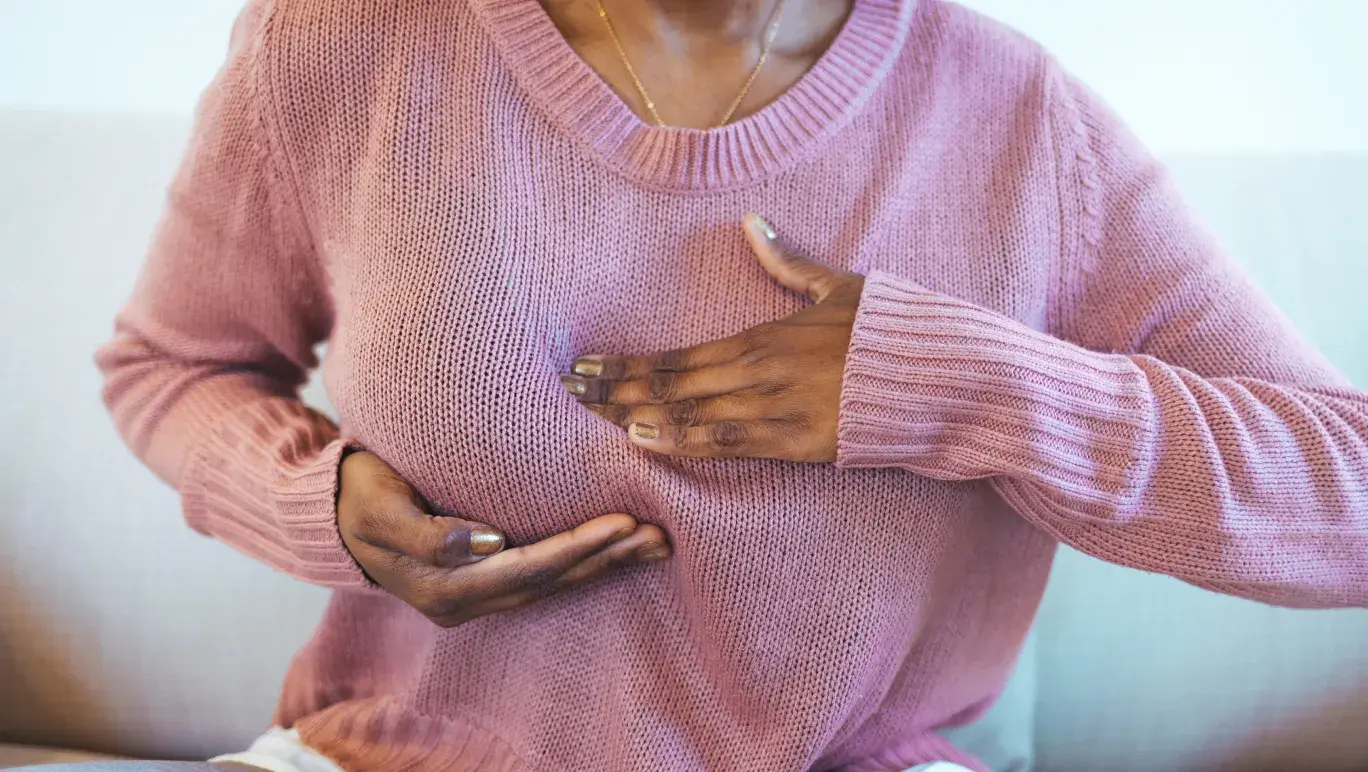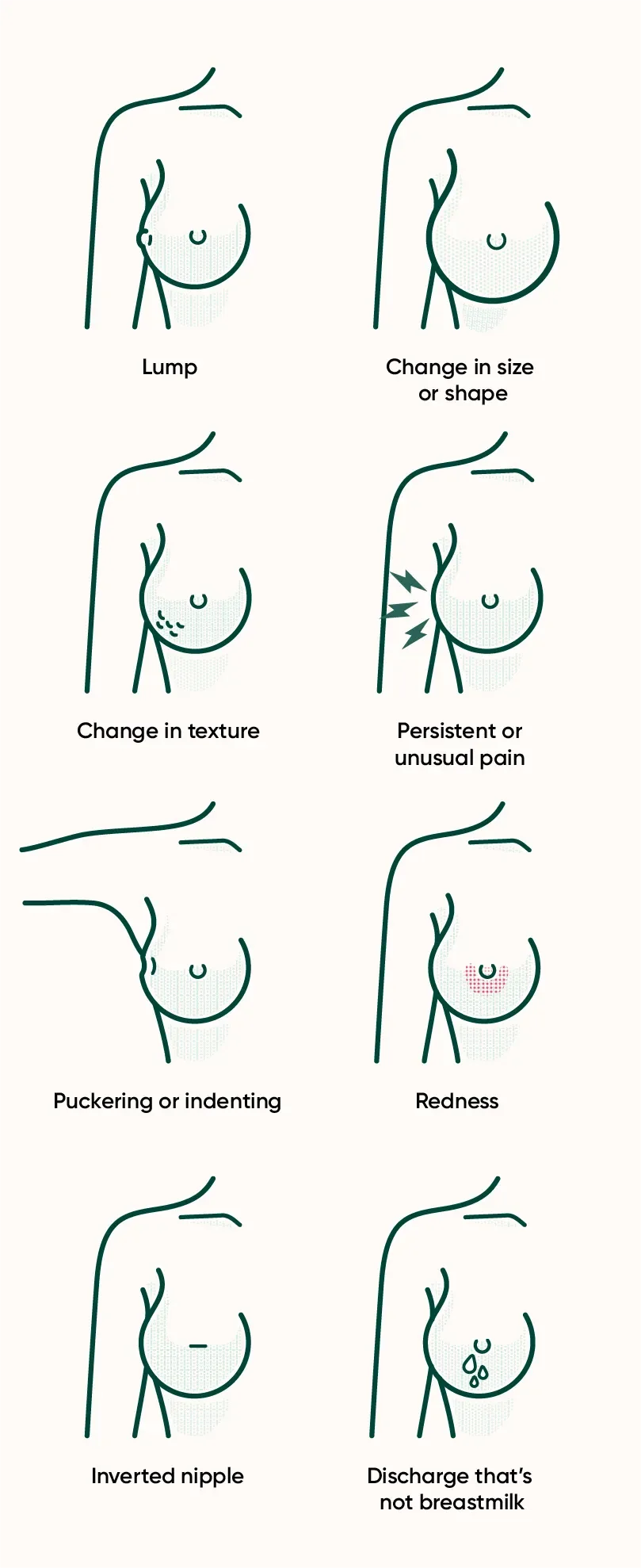How to be breast aware: Signs to watch for alongside screening

Did you know that, according to the National Breast Cancer Foundation in Australia, 58 Australians are diagnosed with breast cancer every day? In fact, 1 in 7 women and 1 in 550 men are diagnosed with breast cancer in their lifetime.
While those numbers might feel overwhelming, the survival rates for breast cancer are excellent if found and treated early. However, the survival rates decrease as the disease progresses. This is why early detection and treatment is key.
Following the screening guidelines, working with your healthcare professional, and being aware of any changes in your breasts are crucial steps in early detection—here’s how.
Staying proactive with screening
Cancer Australia notes that “screening using mammography is the best early detection method available for reducing deaths from breast cancer”. A mammogram can detect tiny cancers, sometimes smaller than a grain of rice. We usually cannot feel these cancers physically, which is why staying on top of screening is so important.
BreastScreen Australia invites women aged 50 to 74 for free two-yearly mammograms. Women aged 40 to 49, and those over 74, can also receive a free mammogram. However, they do not receive an invitation.
It's important to attend the mammograms when invited. If you are not invited, it is important to work with your healthcare professional to consider what screening needs to be done and how often.
Dr Dinesh Palipana knows this reminder personally. After his mum’s diagnosis, he’s encouraging Australians to understand the signs and check in regularly.
For men, there are no specific screening guidelines due to the lower rates of breast cancer, but it's still crucial to have regular conversations with your healthcare professional about breast health especially if you notice any changes.
Why talking to your doctor is important
For all of us, having a general practitioner is important. In addition to the usual screening program, general practitioners can identify other risk factors, like family history or genetics, you may have for breast cancer and talk about additional steps. General practitioners are trained specialists that understand how and when to screen patients for conditions like breast cancer throughout every stage of life.
What is breast awareness?
According to the Breast Cancer Network Australia and the National Breast Cancer Foundation, being breast aware is recommended for all women. That is, to understand the look and feel of your breasts to know what normal looks and feels like for you; and to be aware of changes over time.
Everyone's breasts look and feel different. The shapes, sizes, symmetry, and nipples, are all different for every woman. The key is to become aware of what is normal for you. That way, you know what is different if changes happen.
How to be breast aware
The Breast Cancer Network Australia and National Breast Cancer Foundation have resources on breast awareness. Overall, there is no need for a special technique. However, notice what your breasts look like when you do normal activities like dressing or showering. On top of that, get into a regular routine of looking and feeling for any changes.
This can be done, for example, by standing in front of a mirror with your arms by your side, as well as with your arms above your head. Pick the time and place that is most comfortable for you. Check all parts of your breast, including your armpits and around your collarbone. Over time, look out for things that are different for you.
Note: it is important to remember that breast awareness does not replace screening and talking to your doctor.
Signs to look for
Some of the key signs to be mindful of include:
- changes in any of these regions;
- changes in the size or shape of your breast;
- irritation or dimpling of your breast skin;
- persistent or unusual pain in any area of your breast;
- puckering, or indenting, of your breast when you lift your arms;
- redness, crusting, or flaking, in your nipple area;
- inverting of the nipple;
- any new lumps or bumps;
- pain in the nipple; and
- discharge that is not breastmilk.

What to do if you find a change
If you find a change, get in touch with your healthcare professional promptly. They can arrange the necessary follow-up. Remember, early detection is the key.
Summary
The early detection of breast cancer is critical for improving survival. The most important tool in early detection is screening, which is performed by BreastScreen in Australia. It is also vital to find a general practitioner that you can develop a good relationship with, who can explore any other risk factors for breast cancer with you. Lastly, breast awareness is recommended for all women, though it does not replace screening.
This article is for informational purposes only and does not provide medical advice, diagnosis, or treatment. Any information published on this website or by this brand is not intended as a substitute for medical advice. If you have any concerns or questions about your health you should consult with a health professional.
